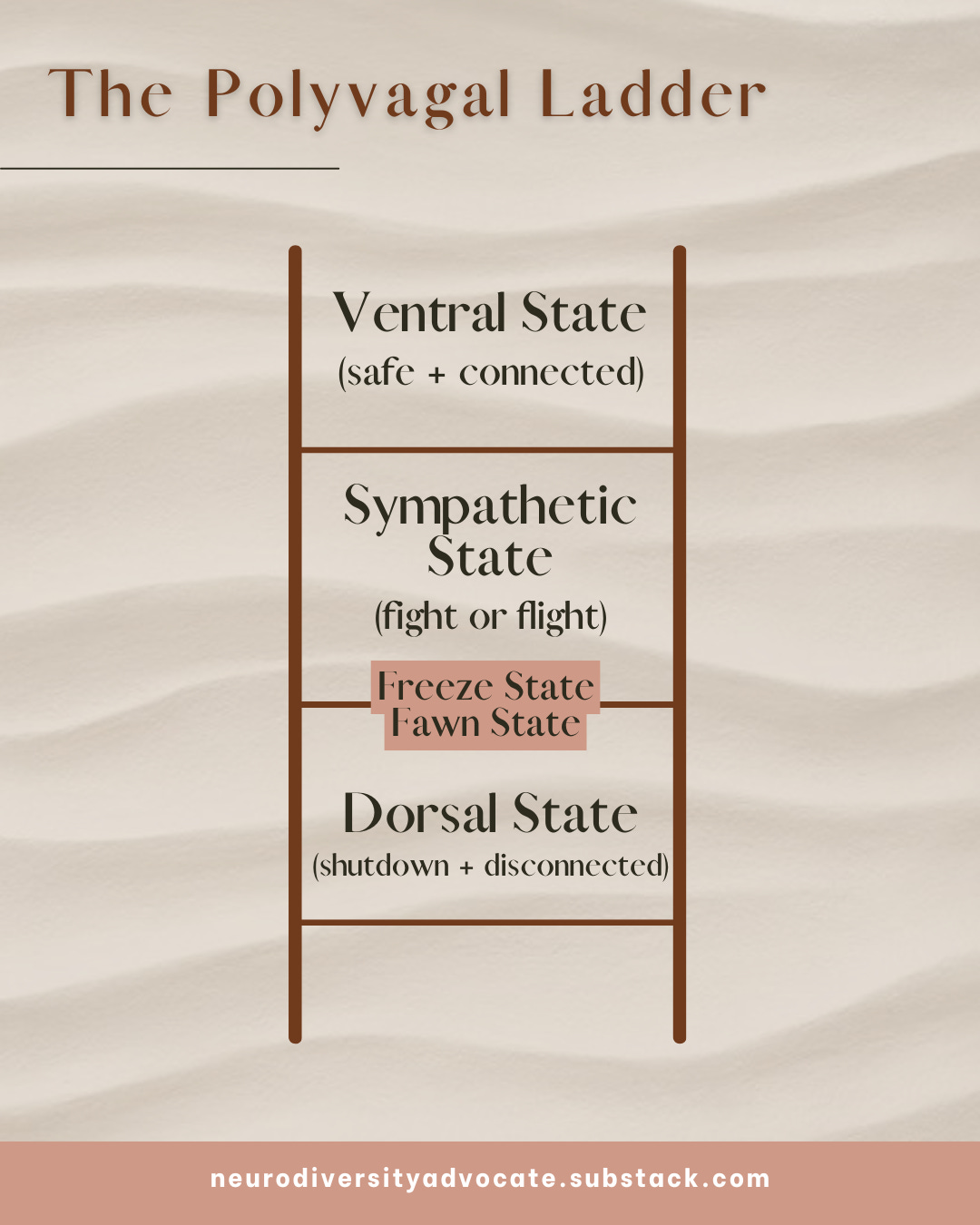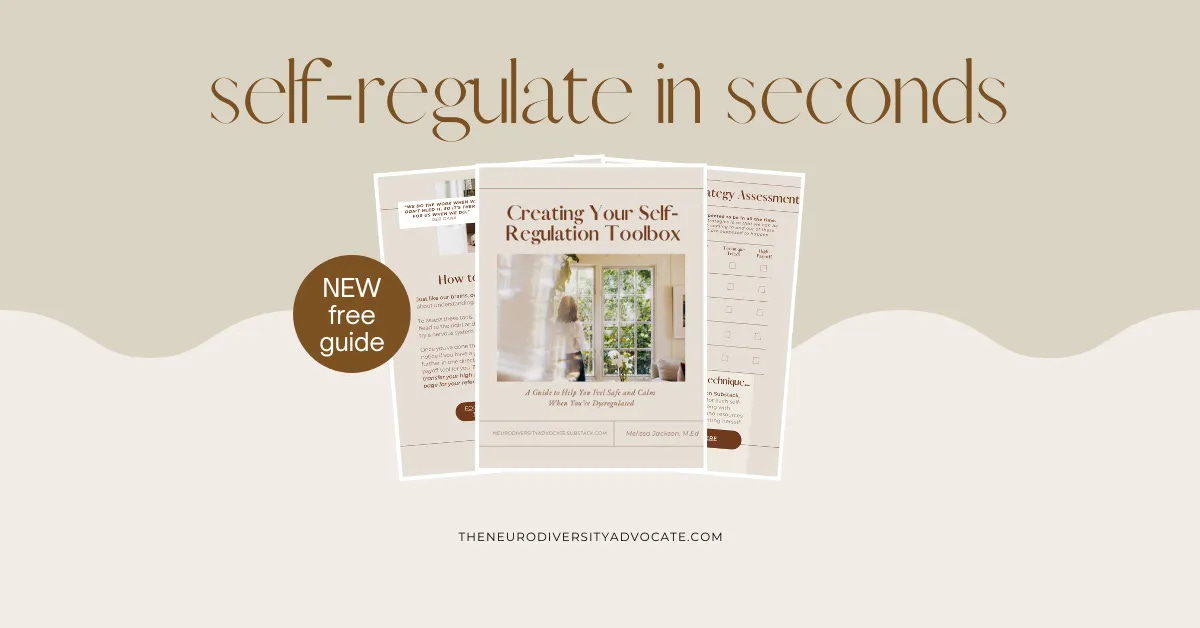Hey guys- welcome back!
Today I'm going to model how we move out of the nervous system state of shutdown, freeze, dissociation, overwhelm, and procrastination with six different self-regulation strategies.
In this post you’ll find guided sessions for:
The Nervous System Ladder
In this post, I introduced you to the newest theory from Polyvagal theory: the nervous system ladder.
It identifies three different states of the nervous system:
At the top of that ladder is our ventral state.
It's our state of rest and digest of connection.
Below that state is fight or flight.
That's a sympathetic state where we're in that protection mode where we either want to fight or flee.
And then below fight or flight is what we call dorsal vagal.
And that is essentially when we are shut down, we're disconnected. It often happens when we've been in the state of fight or flight for a really long time. Or we're in that state of fight or flight and we don't feel like we have the option to fight or flee. Our nervous system will shut down.
When we're at the bottom of that ladder it’s supportive to have strategies to help us move up the ladder, to help us thaw out and start feeling a bit more regulated, grounded, and present in our bodies again.
But it’s not expected that we stay in the connected state all the time…
Just as a disclaimer, it is so, so normal to move in and out of these different states of the nervous system multiple times a day.
In fact, in a regulated nervous system, that's what happens. We move in and out of these differently states fluidly. When we're dysregulated, we're stuck in one of these states. And that’s when we can use specific tools to support us in moving up the ladder and feeling safer in our bodies.
So the tools we're going to be talking about today are going to be supportive if we find ourselves stuck predominantly in this state of shutdown, disconnection, or freeze.
Don’t forget your assessment tool
Before we begin. I want to encourage you to use one of your assessment tools. If you’re unfamiliar with how to do your assessment, make sure to check out this post + grab my free toolkit:
There's multiple ways that we can determine if these strategies are high payoffs for your nervous system.
All of our nervous systems are unique and so figuring out what works for you is going to be critical in supporting more flexibility and fluidity in your nervous system. To be with discomfort, to move out of the states and to find safety in your body.
So pick an assessment tool, I am going to do the head rotation, to take note on my range of motion before and after applying this strategy.
So the first one we're going to do today. Is called 5, 4, 3, 2, 1.














